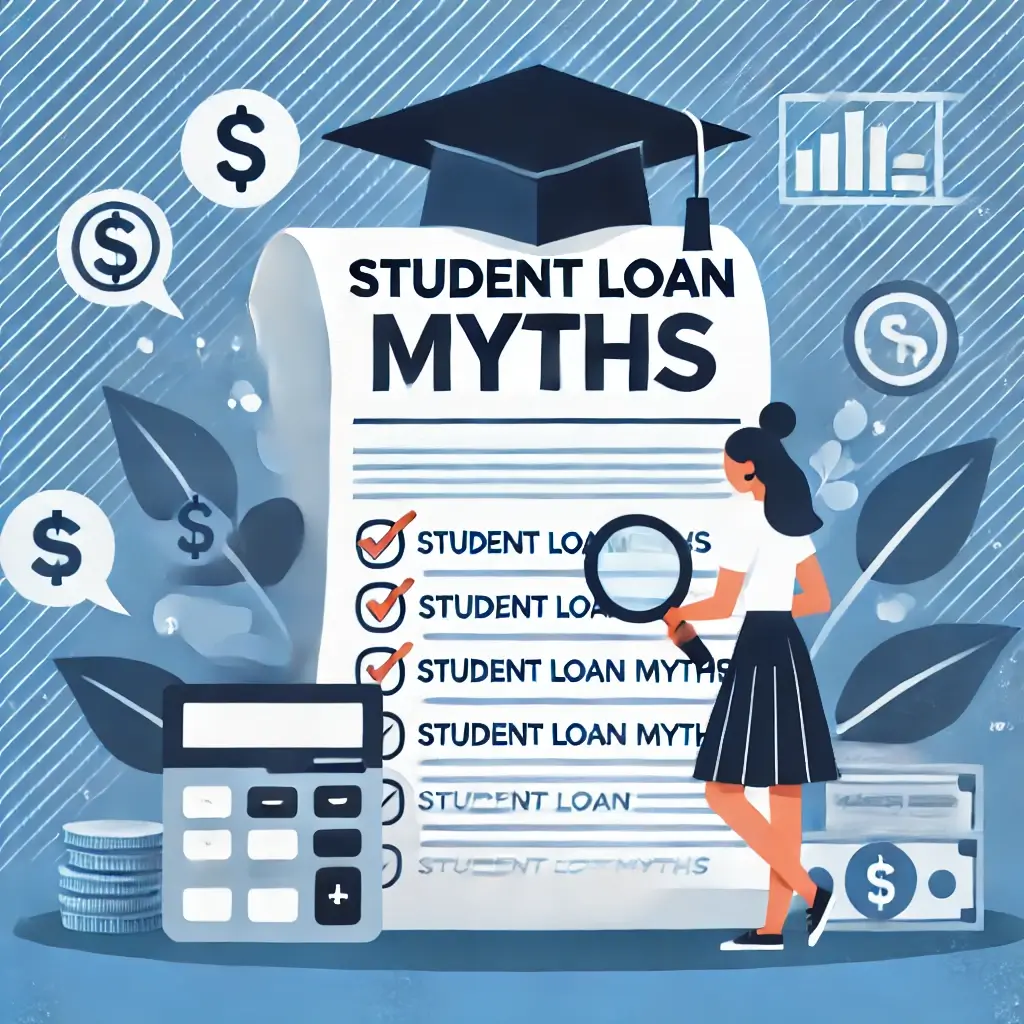Student loans are often the gateway to higher education, allowing students to finance tuition, living expenses, books, and other costs associated with their studies. However, student loan myths and misconceptions can lead to poor financial decisions and unnecessary stress. This guide aims to clarify some of the most common myths, helping students make informed choices as they navigate their educational financing options and avoid common pitfalls.
Understanding Student Loans: A Brief Overview
Student loans provide financial assistance to help cover the increasing costs of higher education. These loans come with a repayment obligation, typically including interest, which begins after graduation or if the student ceases enrollment. The terms and interest rates vary based on whether the loan is federal or private. An informed understanding of how these loans work can positively impact a student’s financial decisions, career choices, and long-term financial health.
In the sections that follow, we outline key student loan myths that every student should be aware of.
Myth 1: Student Loans Are Interest-Free While You’re in School
A common myth is that student loans do not accumulate interest while students are enrolled. This is only partially true and depends on the loan type.
Federal Subsidized Loans
For students with financial need, federal Direct Subsidized Loans offer a benefit: the government covers the interest while the student is in school, during the grace period, and in deferment. This means that subsidized loans are effectively interest-free during these periods.
Federal Unsubsidized Loans and Private Loans
For Direct Unsubsidized Loans and most private student loans, interest starts accruing immediately upon disbursement, regardless of the student’s enrollment status. If unpaid, this interest adds to the total debt upon graduation.
By understanding the interest terms associated with each type of loan, students can better prepare for the financial responsibilities that come after their studies.
Myth 2: All Student Loans Are the Same
The most famous Student Loan Myths are the following: Student loans vary significantly in terms of eligibility, interest rates, and repayment options. Here’s a breakdown of the main types:
Federal Student Loans
Federal student loans are available to nearly all students, with set interest rates and flexible repayment options, including income-driven plans. These loans often include subsidized options for students with financial needs, offering benefits like deferred interest during school.
Private Student Loans
Private loans, offered by banks, credit unions, and other lenders, typically require a credit check and often a co-signer. The interest rates can be fixed or variable and may be influenced by the borrower’s credit score. Private loans lack the flexibility and protections of federal loans, such as income-driven repayment and forgiveness options.
State-Specific Student Loans
Some states offer student loans with specific eligibility requirements and unique benefits, which can differ from both federal and private options. Students must research and compare these options to find the best fit for their financial needs and goals.
Each loan type has its advantages and disadvantages. Understanding these distinctions helps borrowers make better choices based on their circumstances and future financial goals.
Myth 3: You Can’t Cancel or Forgive Student Loans
While it’s true that student loans are not easily dismissed, several avenues exist for loan forgiveness or discharge under specific conditions.
Public Service Loan Forgiveness (PSLF)
The Public Service Loan Forgiveness (PSLF) program allows borrowers working in qualifying public service roles (e.g., education, healthcare, government) to have their federal loans forgiven after 120 qualifying monthly payments.
Income-Driven Repayment (IDR) Plans
Borrowers enrolled in income-driven repayment plans can potentially have their loans forgiven after 20 or 25 years of qualifying payments, depending on the plan. This forgiveness option is particularly helpful for borrowers with high debt relative to income.
Loan Discharge for Special Circumstances
Loans may also be discharged under certain conditions, such as total and permanent disability or school closure. Federal regulations allow for loan cancellation if specific criteria are met.
Knowing about these options can empower borrowers to seek financial relief when eligible, reducing stress and enhancing financial stability.

Myth 4: You Have to Start Repaying Student Loans Right After Graduation
Most student loans, particularly federal loans, provide a grace period following graduation, allowing borrowers time to find employment and establish their finances before repayment begins. Here’s how it typically works:
- Federal Loans: Federal student loans generally come with a six-month grace period post-graduation.
- Private Loans: Grace periods vary with private loans, and not all lenders offer this benefit.
Additionally, borrowers may have access to deferment or forbearance options during times of financial hardship, allowing them to temporarily pause or reduce payments. These options provide flexibility and can ease the transition to repayment.
Understanding when repayments start and exploring deferment options can help borrowers create a repayment plan that fits their financial situation.
Myth 5: Student Loans Will Hurt Your Credit Score
Contrary to popular belief, student loans can help build your credit score—if managed responsibly. Here’s how student loans impact your credit profile:
- Payment History: The most significant factor in your credit score is payment history. Making on-time payments can positively impact your score, while missed payments can harm it.
- Credit Mix: Having a mix of credit types, such as installment loans (like student loans) and revolving credit (like credit cards), can positively affect your credit score.
- Length of Credit History: Student loans typically have long repayment terms, contributing positively to the length of credit history, which is another factor in credit scores.
While accumulating debt can impact your credit utilization, responsible repayment and on-time payments can turn student loans into a tool for building a strong credit profile.
Myth 6: Carrying Student Debt Will Hurt Your Employment Prospects
A common myth is that employers are less likely to hire individuals with student debt. However, in practice, employers prioritize skills, experience, and potential contributions over financial circumstances.
- Skill Over Debt: Employers in high-demand fields, such as technology, healthcare, and engineering, often prioritize qualifications over financial background.
- Employer Support: Some employers even offer student loan repayment assistance as part of their benefits package, recognizing the value of an educated workforce.
Maintaining a proactive approach to career-building, such as gaining relevant skills and networking, is more likely to impact employment opportunities than student loan debt.
Myth 7: You Should Borrow as Much as Possible
Some students believe they should borrow the maximum amount allowed, assuming it will give them financial flexibility during college. However, borrowing excessively can lead to long-term financial strain.
Responsible Borrowing Tips
- Borrow Only What You Need: Create a budget to cover necessary expenses and limit borrowing to avoid excessive debt.
- Explore Scholarships and Grants: These do not require repayment and can significantly reduce loan dependency.
- Consider Part-Time Work: Earning extra income can help cover living expenses and reduce the need to borrow.
Borrowing only what’s necessary ensures that loan repayments remain manageable and supports better financial health after graduation.
Conclusion on Student Loan Myths
Student loans can be a powerful investment in your future, but myths and misconceptions can lead to costly financial missteps. By distinguishing between fact and fiction, you can make more informed decisions that align with your academic and financial goals.
Understanding the differences between loan types, knowing about repayment and forgiveness options, and managing loans responsibly can all contribute to a successful borrowing experience. Remember, student loans are tools that, when used wisely, can facilitate access to education without compromising long-term financial security.
Educate yourself, explore all available resources, and approach student loans with a strategic mindset. By dispelling common myths, you’ll be better equipped to navigate your educational journey with confidence and financial peace of mind.
